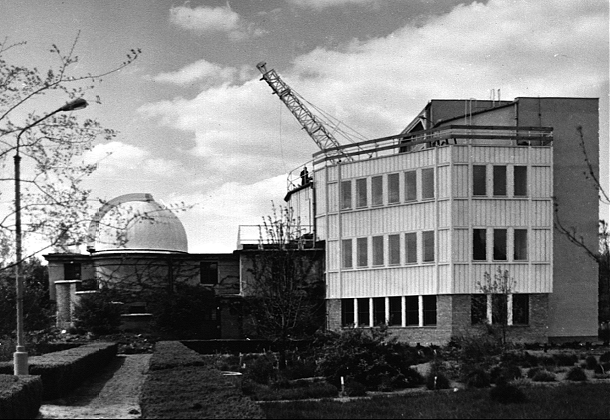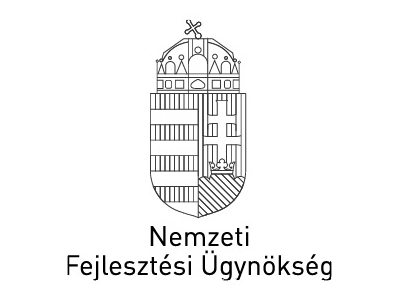 Introduction
Introduction
Dear visitor, welcome to our site and let us to tell you what we represent in the scientific field of the Solar Physics.
History: The Hungarian solar physics has been re-vitalized in the Astronomical Insitute at Svábhegy, Budapest in 1946, by establishing the Solar Department. The department moved to the educational observatory of the Kossuth University,
Debrecen which was located in the Botanical Garden of the university and a new research institute came into life under the directorship of Loránt Dezső named Heliophysical Observatory of the Hungarian Academy of Sciences.
The original building of the observatory has been enlarged and photoheliographic observations have been started on a regular basis. One of the photoheliographs has been moved to the Gyula Observing Station built atop of the water
tower of Gyula (a town about 110 miles from Debrecen), which yielded twofold advantages. On one hand, there is only a single solar telescope in the world (Mount Wilson 150 feet), whose coelostat is farther from the ground level than
the Gyula telescope (43 m) which is of basic importance for the image quality. On the other hand, we have about 50 additional observing days yearly.
Significant developments have been made in the observatory in the beginning of the seventieths, the building has been enlarged and a big coronograph has been erected. A spectrograph and a Lyot-type H-alpha filter belong to the instrument.
The observatory has been attached to the Konkoly Observatory in 1980 as its solar department.
After the political changes the operation of the observing facilities increasingly become a problem - especially financial reasons - instruments, telescopes maintenance, furthermore the technical progress the possibility of high-resolution
satellite-based (SOHO / SDO) space-born observations brought new opportunities. For the processing of satellite-based observations the senior researchers at the observatory (Baranyi Tünde, Ludmány András, Győri Lajos)
submitted several successful proposals and won national and international grants, such as SOTERIA or eHEROES, where observations of the satellites processed in great details with high resolution and wide time intervals.
Partly cause of the technical progress and the need of the modernization of the old instruments and its difficulties, the Director of the Konkoly Thege Miklós Astronomical Institute (Konkoly Observatory) and the Director General
of the Research Centre for Astronomy and Earth Sciences of the Hungarian Academy of Sciences decided to close the observing facilities in the years 2015 and 2016, but
the mission of the data production is continued by the Astronomical Institute based on international ground-based observatories and ESA/NASA current and planned satellite-based instruments. Nowadays, the data production with some resercher
works at the headquarter of the Institute of Nuclear Research (ATOMKI) in Debrecen, as Virtual Solar Observatory.
Databases: unique in all the world! The most important task, even destination, of all observatories is to gather long-term homogeneous observational material about those phenomena for which its instruments are most appropriate.
The public interest is very high toward solar activity because these are the most influential astronomical phenomena onto the terrestrial environment.
Considering that many phenomena reveal themselves in long timescale, their study would be very difficult or even impossible without long-term homogeneous materials.
Pre-history the Greenwich Photoheliographic Results (GPHR) is the classical photospheric database, its volumes between 1878 and 1976 contain the positions and areas of sunspot groups for all days.
The program Debrecen Photoheliographic Results (DPR) started after finishing the photoheliograph program in Greenwich.
The original aim was to compile a more detailed and precise catalogue than any previous attempts which would have also contained the magnetic polarities of the spots besides their positions and areas.
In case of Debrecen Photoheliographic Data (DPD) the co-workers not involved in DPR started a new catalogue which incorporates all data which can be reduced from our photohelograms, i.e. the precise position and
area of each spot for all days, but not the magnetic polarities received from other observatories and the identifications of the single spots from one day to the other, because these are extremely labour-consuming tasks.
For this reason, significant methodological developments have been carried out under the supervision of Lajos Győri, which automatize the major part of the work.
In the past period owing to the awarded grants of European ESA(European Space Agency) projects and IT develepments the DPD catalogue - based on ground-based observations - extended with the SOHO/MDI Debrecen Sunspot Data (SDD)
and SDO/HMI Debrecen Sunspot Data (HMIDD) databases based on satellite observations, where the position data and also magnetic data of sunspots or faculaes are contained in the databases, in hourly distributions.
Currently, cause of low capacity and financial problems, we produce data in "daily-1" resolution as Quick-Look data based on NASA SDO/HMI instrument and providing possibility for analysis of scientific predictions, furthermore according to
homogenity of the observations we maintain of the ground-based databases, also.
It is worth to mention the Hungarian Historical Solar Drawings (HHSD) collection, which is a new initiative. Considering that the historical observations made in Kalocsa and Ógyalla between 1873 and 1920 cover a
48-years period, and the Debrecen photographic material (nearly two hundred thousands plates) gathered between 1958 and 2000 cover a further 43 years period, so the Hungarian full-disc observations cover a total of 101 years.
This is the second longest photospheric material worldwide which ranks among the best materials also by its qualities.
And, it is completed the revision of the Greenwich Photoheliographic Results (GPHR) in Debrecen for the full period of Greenwich, which contained a lot of errors.
 On this image can see the NASA SDO (Solar Dynamics Observatory)
satellite and its instruments HMI,AIA, and EVE.
On this image can see the NASA SDO (Solar Dynamics Observatory)
satellite and its instruments HMI,AIA, and EVE.









